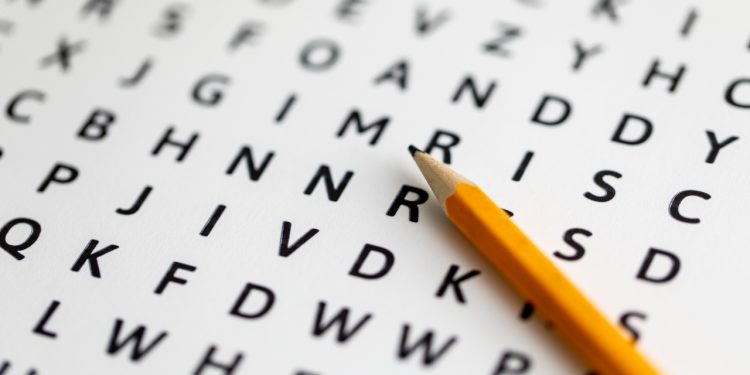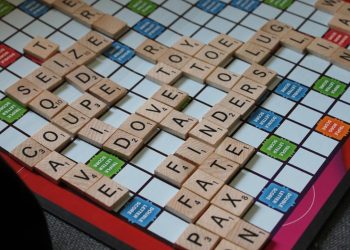If you’ve ever played Wordle, you know the thrill of guessing a five-letter word in just six tries. It’s a blend of logic, intuition, and a dash of luck. But what happens when you remove the human element and throw artificial intelligence into the mix? Can a machine, built on code and computation, crack the game that’s captivated millions with nothing more than a blank grid and five empty boxes?
We put it to the test. And the results were both fascinating and eye-opening.
First, Let’s Talk About Wordle
Before diving into the world of AI, let’s quickly revisit how Wordle works. Each day, the game picks a random five-letter word. You get six attempts to guess it. With each guess:
- Letters in the right spot turn green.
- Correct letters in the wrong spot turn yellow.
- Letters that aren’t in the word at all turn gray.
So, it’s not just about knowing words, it’s about deduction. Wordle is, at its core, a logic puzzle disguised as a vocabulary game.
Now, that sounds like something right up AI’s alley, doesn’t it?
Why AI Might Be the Perfect Wordle Player
AI excels at solving patterns and optimizing decisions based on feedback. Wordle gives a limited set of data (green, yellow, gray), and asks for a precise result (the correct word). That’s the kind of structured problem AI is built to handle.
But it’s not just about raw processing power. Solving Wordle efficiently also requires strategy. Human players rely on starter words like “adieu” or “crane” to maximize vowel and consonant exposure early. Can AI learn the same tricks, or better ones?
Building an AI to Play Wordle
To really put AI to the test, we built a basic simulation using a few different approaches. Each AI was fed the same Wordle rules and access to the same word list. Here’s how we approached it:
1. Brute Force AI
This version of the AI simply guessed every possible word, removing those that didn’t match previous feedback. It wasn’t smart, it was persistent.
Result:
It solved most puzzles in 4–6 tries, but with no real strategy. It was like throwing spaghetti at the wall to see what sticks.
2. Frequency-Based AI
This version analyzed the frequency of letters across the word list. It guessed words that were statistically more likely to have common letters, especially early on.
Result:
This AI performed noticeably better. Words like “slate,” “crane,” and “stare” became go-to openers. It often solved puzzles in 3–4 tries.
3. Feedback-Driven Optimizer
This was the most advanced model. After each guess, it filtered the list based on color feedback, just like a human would. But it also ranked the remaining possible words by how much information each guess would reveal, aiming to reduce the word pool as fast as possible.
Result:
Consistently solved Wordles in 3 tries or less. This was our winner.
So, yes, AI can absolutely solve Wordle. But the real story is in how it does it.
How AI Thinks Differently From Humans
Humans bring a lot of baggage into Wordle. We might avoid weird words, repeat the same openers out of habit, or guess emotionally (ever tried “heart” just because it felt right?). AI, on the other hand, is ruthlessly logical.
Where a person might avoid an uncommon word like “fjord,” an AI might pick it because the letter combination fits what’s left in the pool. No bias. No hesitation.
But interestingly, that’s also a weakness. While humans can sometimes guess correctly based on intuition or context (like sensing a word pattern), AI can get stuck in analysis loops if it’s not properly optimized.
So, ironically, a mix of AI logic and human intuition might be the perfect combo.
The Role of Strategy: It’s Not Just About Guessing
Let’s break down what good Wordle strategy looks like, human or AI:
- Maximizing early information: The best openers use common letters (R, S, T, L, N, E) to eliminate possibilities quickly.
- Tracking letter positions: After each guess, note where letters are and aren’t. Don’t reuse grays.
- Balancing guess value: Sometimes it’s better to guess a word that’s unlikely to be the answer but will eliminate many others.
These are principles that can be built into an AI, but they also reflect what top human players already do. That’s the real secret. The game rewards both logic and intuition. And AI, at its best, is just structured logic.
What About GPT or Language-Based AI?
That’s where it gets more interesting. The AI models we discussed above were logic-focused, based on rules and filters. But what if we use a language model like GPT?
GPT isn’t designed for Wordle, but it has read millions of words and knows language patterns deeply. So, if we prompt it like this:
“Guess a five-letter word where the second letter is ‘A’, and the word includes ‘T’ and ‘R’ but not in the right spot…”
GPT can actually make decent guesses. It “feels” what words look right. This mirrors how humans play intuitively.
In our experiment, GPT-based models performed similarly to frequency-based AIs, especially when fine-tuned with feedback. But they occasionally made guesses that weren’t in the Wordle word list, highlighting a key challenge: language fluency doesn’t always equal rule-based success.
Could AI Beat Wordle Every Time?
Technically, yes, if it’s given the rules and word list, and optimized properly.
But Wordle is designed to be beaten. It’s not infinite. It’s not adversarial like chess or Go. There are about 2,300 possible solution words, and the feedback is structured. That’s a manageable playground for AI.
So rather than asking, can AI beat Wordle, the better question is:
How fast and efficiently can AI beat Wordle compared to a human?
In Our Simulation:
- Casual humans: 4–6 tries on average
- Skilled humans: 3–4 tries
- Optimized AI: 2–3 tries
- Brute force AI: 5–6 tries
So yes, AI wins in consistency and speed. But it lacks the joy, suspense, and intuition of human play.
What This Tells Us About AI and Games
Wordle is a microcosm of the larger AI conversation. It shows us that:
- AI can outperform humans in structured, rule-based games.
- AI lacks emotional nuance but excels in pattern recognition.
- AI needs context to be truly powerful.
- Humans and AI working together can create even better outcomes.
And perhaps most importantly, it reminds us that not all games are meant to be “solved.” Wordle is about the experience, not just the outcome. That’s something AI still can’t replicate.
Should You Use an AI to Play Wordle?
Well, that depends. If your goal is to win at all costs, sure, build or use an AI. There are even online tools now that help you play Wordle with algorithmic support.
But if you’re playing for fun, satisfaction, and that “aha!” moment? Stick with your own brain. You might not be as efficient as an AI, but you’re probably having more fun.
Unless, of course, you want to challenge yourself against the AI, which could be a fun twist.
Wordle-Inspired Games and the Rise of Smart Word Puzzles
The popularity of Wordle has sparked a whole ecosystem of similar word and logic games. From Quordle to Octordle to games like SpellTower and Waffle, players are craving word-based challenges more than ever.
AI can certainly solve these too, but these games are evolving faster than AI can dominate them. And many platforms are now leaning into creativity, variation, and unpredictability, areas where humans still have the edge.
Ready to Test Your Own Brainpower?
If you’re into smart word games and want to push your vocabulary and logic skills (without AI help), you’ve got to check out Puzzle Jam.
Why Puzzle Jam?
- Word puzzles that evolve as you play
- Fresh daily challenges to keep your mind sharp
- Designed to test not just your vocabulary, but your strategy
- A clean, addictive, and mobile-friendly design
- Built for real word lovers not bots
If you loved Wordle, you’ll love Puzzle Jam even more. It’s like Wordle’s cool cousin, with way more variety and challenge.
So, are you ready to prove you’re smarter than AI?
Head over to PuzzleJam.io and start solving today!














